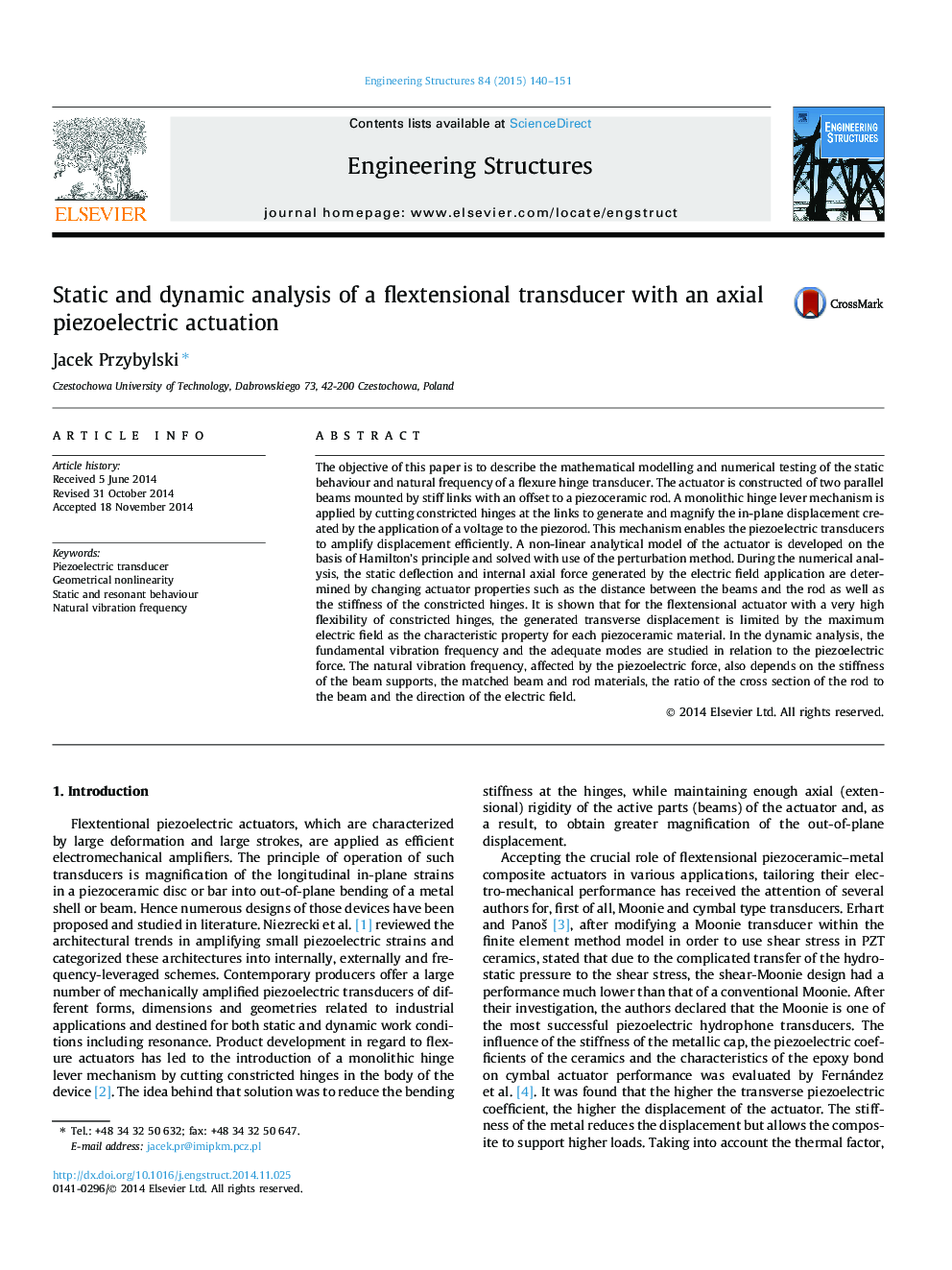| Article ID | Journal | Published Year | Pages | File Type |
|---|---|---|---|---|
| 6740539 | Engineering Structures | 2015 | 12 Pages |
Abstract
The objective of this paper is to describe the mathematical modelling and numerical testing of the static behaviour and natural frequency of a flexure hinge transducer. The actuator is constructed of two parallel beams mounted by stiff links with an offset to a piezoceramic rod. A monolithic hinge lever mechanism is applied by cutting constricted hinges at the links to generate and magnify the in-plane displacement created by the application of a voltage to the piezorod. This mechanism enables the piezoelectric transducers to amplify displacement efficiently. A non-linear analytical model of the actuator is developed on the basis of Hamilton's principle and solved with use of the perturbation method. During the numerical analysis, the static deflection and internal axial force generated by the electric field application are determined by changing actuator properties such as the distance between the beams and the rod as well as the stiffness of the constricted hinges. It is shown that for the flextensional actuator with a very high flexibility of constricted hinges, the generated transverse displacement is limited by the maximum electric field as the characteristic property for each piezoceramic material. In the dynamic analysis, the fundamental vibration frequency and the adequate modes are studied in relation to the piezoelectric force. The natural vibration frequency, affected by the piezoelectric force, also depends on the stiffness of the beam supports, the matched beam and rod materials, the ratio of the cross section of the rod to the beam and the direction of the electric field.
Related Topics
Physical Sciences and Engineering
Earth and Planetary Sciences
Geotechnical Engineering and Engineering Geology
Authors
Jacek Przybylski,
